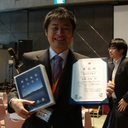Instrumental evaluation sensitively detects subclinical skin changes by the epidermal growth factor receptor inhibitors and risk factors for severe acneiform eruption.
Keywords
Abstract
Epidermal growth factor receptor inhibitors (EGFRI), EGFR tyrosine kinase inhibitors (TKI) and anti-EGFR antibodies commonly develop skin toxicities including acneiform eruption (AfE). However, precise skin changes and risk factors for severe AfE are still unclear. The objective of the current study was elucidation of the useful parameters for early and sensitive detection of the skin changes by EGFRI. Transepidermal water loss (TEWL), skin surface hydration, skin surface lipid levels and erythema/melanin index were serially measured for 2 weeks in 19 EGFR-TKI afatinib/erlotinib-treated patients and for 8 weeks in 20 anti-EGFR antibody cetuximab-treated patients. The TEWL levels of the cheek in the patients who developed AfE of grade 2 and more (AfE ≥ Gr2) were already elevated at 7 days after the initiation of afatinib/erlotinib therapy compared with those before therapy as well as in patients with grade 1 or less (AfE ≤ Gr1). In patients treated with cetuximab, the skin surface hydration on the cheek in AfE ≥ Gr2 patients significantly decreased compared with that of AfE ≤ Gr1 patients at the 2nd and 6th week. Baseline skin surface lipid levels and erythema index on the cheek of patients with AfE ≥ Gr2 were significantly higher than those with AfE ≤ Gr1. The small sample size of the present study, especially for logistic regression analysis, is a limitation. In conclusion, instrumental evaluation declared rapid inflammatory changes of the skin by EGFRI and elucidated oily skin as a risk for severe AfE.



